Who builds a fusion reactor
We say that we will put the sun into a box. The idea is pretty. The problem is we do not know how to make the box.
Pierre-gilles de gennes
French Nobel Laureate
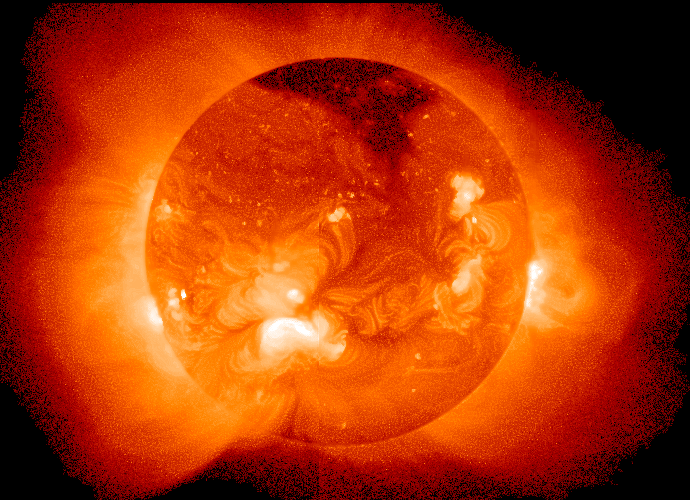
All electronic devices and machines need energy and humanity consumes it very much. But fossil fuels are running out, and alternative energy is not efficient enough yet.
There is a method of obtaining energy that perfectly fits all the requirements - Thermonuclear fusion. The reaction of thermonuclear fusion (the conversion of hydrogen to helium and the release of energy) constantly occurs in the sun and this process gives the planet energy in the form of solar rays. It is only necessary to imitate it on Earth, on a smaller scale. Enough to provide high pressure and very high temperature (10 times higher than on the sun) and the synthesis reaction will be launched. To create such conditions, you need to build a fusion reactor. It will use more common resources on earth, will be safer and more powerful than conventional nuclear power plants. For more than 40 years, attempts have been made to build it and experiments are underway. In recent years, one of the prototypes even managed to get more energy than was spent 1 . The most ambitious projects in this area are presented below:
')
ITER

The largest energy project and the largest research project in the world is the construction of the ITER fusion reactor in France. This experimental reactor for $ 40 billion will not yet serve as a full-fledged power plant, but it will prove that thermonuclear energy is possible. A coalition of countries, including Russia, should complete the construction of the reactor by 2026.
more
Wendelstein 7-X

Most public attention has recently been given to another design of a fusion reactor - the Wendelstein 7-X stellarator (the stellarator is more complex in its internal structure than ITER, which is the tokamak). Having spent just over $ 1 billion, German scientists built a reduced demonstration model of the reactor by 2015 for 9 years. If it shows good results, a larger version will be built.
more
MegaJoule Laser
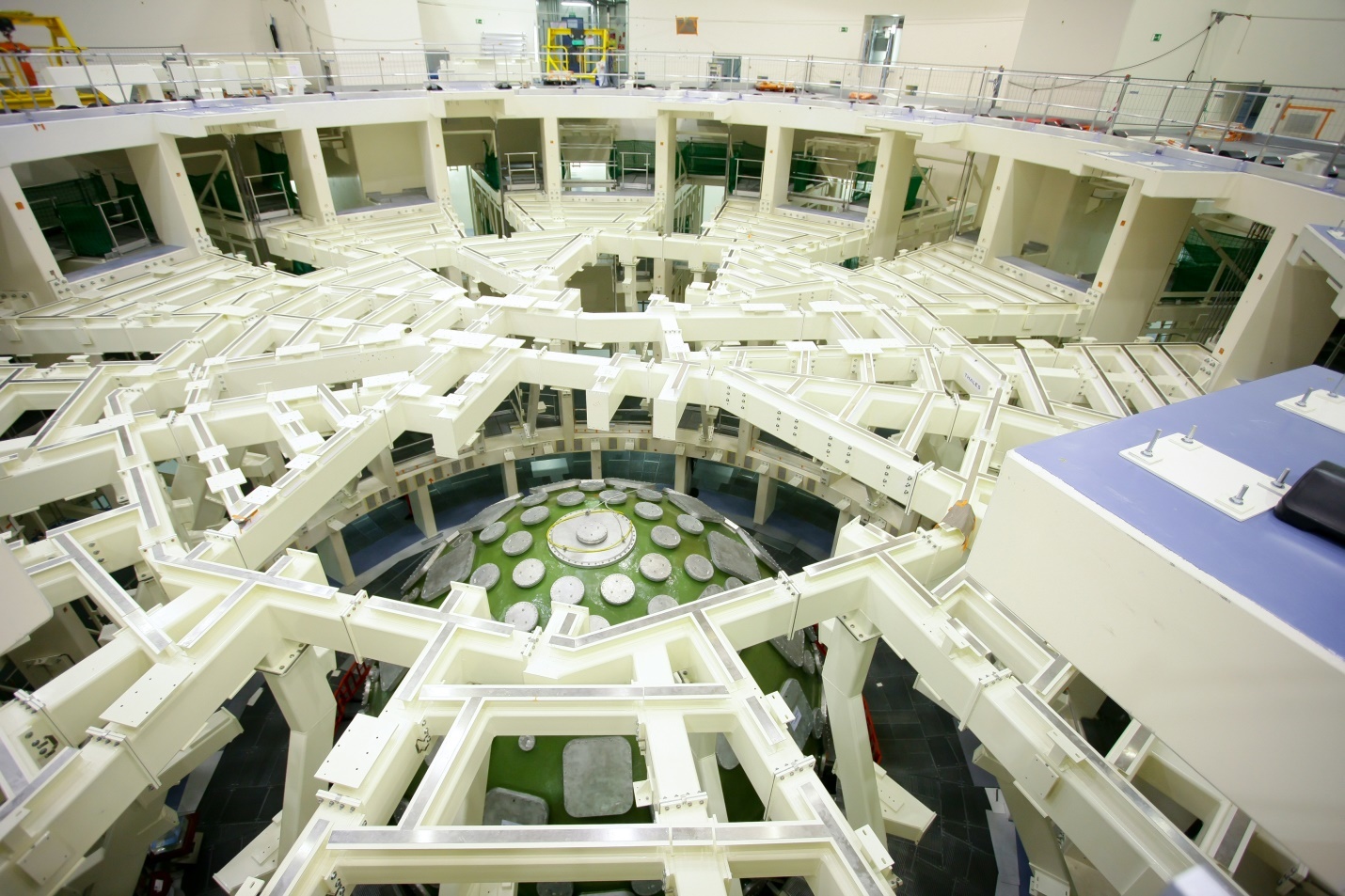
MegaJoule Laser in France will be the most powerful laser in the world and will try to promote a laser-based fusion reactor construction method. The launch of the French installation is expected in 2018.
more
National ignition facility
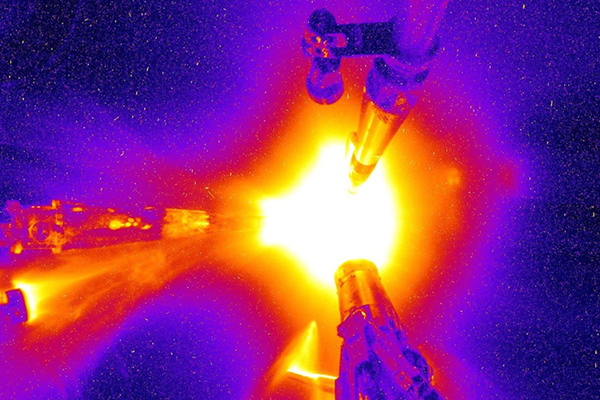
NIF (National ignition facility) was built in the USA for 12 years and 4 billion dollars by 2012. They expected to test the technology and then immediately build a reactor, but it turned out that, as reported by Wikipedia - reach ignition. As a result, ambitious plans were canceled and scientists began to gradually improve the laser. The last task is to raise the energy transfer efficiency from 7% to 15%. Otherwise, funding from the congress of this method of achieving synthesis may cease.
more
Installation in Sarov
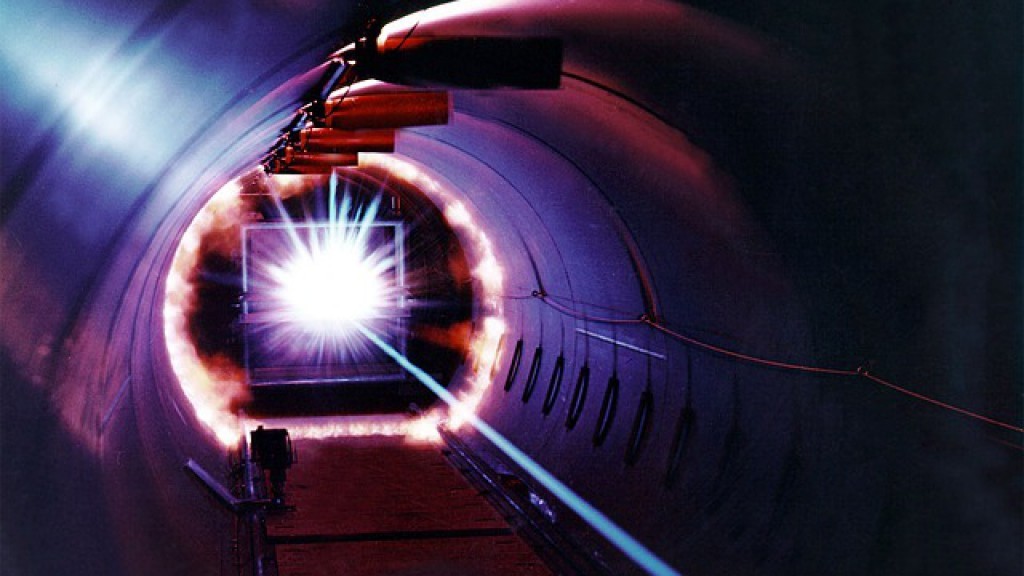
At the end of 2015, the construction of a building for the world's most powerful laser facility began in Sarov. It will be more powerful than the current American and future French and will allow to conduct the experiments necessary for the construction of a "laser" version of the reactor. Completion of construction in 2020.
MagLIF fusion

Located in the USA, the laser - MagLIF fusion is recognized as a dark horse among the methods of achieving thermonuclear fusion. Recently, this method has shown better results than expected, but the power still needs to be increased 1,000 times. Now the laser is undergoing an upgrade, and by 2018, scientists hope to get as much energy as they spent. If successful, an enlarged version will be built.
more
Institute of Nuclear Physics

In the Russian INP persistently conducted experiments on the method of "open traps" that was abandoned by the United States in the 90s. As a result, indicators were obtained that were considered impossible for this method. The INP scientists believe that their installation is now at the level of the German Wendelstein 7-X (Q = 0.1), but cheaper. Now for 3 billion rubles they are building a new installation
more
Ignitor
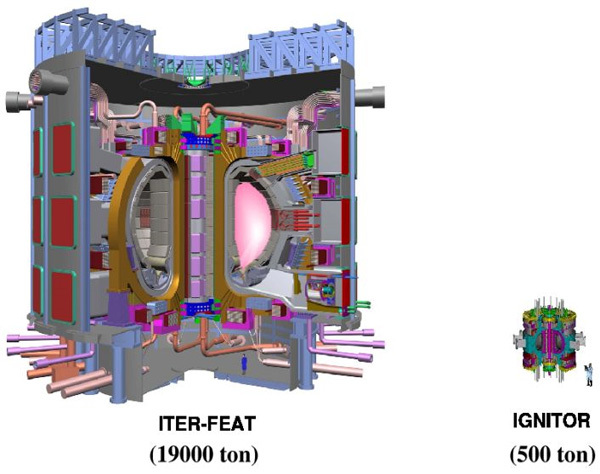
The head of the Kurchatov Institute constantly recalls about plans to build a small fusion reactor in Russia - Ignitor. According to the plan, it should be as effective as ITER, although less. Its construction should have begun 3 years ago, but this situation is typical for large scientific projects.
more
EAST
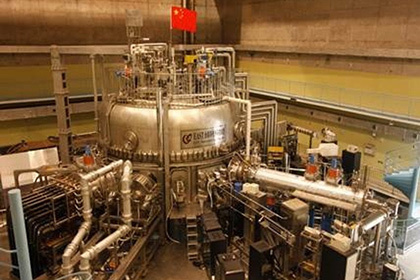
At the beginning of 2016, the Chinese tokamak EAST managed to get a temperature of 50 million degrees and hold it for 102 seconds. Before the construction of huge reactors and lasers, all the news about fusion were like that. One would have thought that this was just a competition among scientists — who would keep the temperature higher and longer. The higher the temperature of the plasma and the longer it can be kept - the closer we are to the start of the fusion reaction. There are dozens of such installations in the world, a few more ( 1 ) ( 2 ) are being built so that the EAST record will soon be broken. In essence, these small reactors are just equipment testing before being sent to ITER. more
Lockheed martin compact fusion

Lockheed Martin announced in 2015 about a breakthrough in thermonuclear energy, which will allow them to build a small and mobile thermonuclear reactor in 10 years. Considering that even very large and not mobile commercial reactors were expected no earlier than 2040, the corporation’s statement was met with skepticism. But the company has great resources so who knows. The prototype is expected in 2020.
more
Helion Energy

Helion Energy, a popular startup in Silicon Valley, has a unique plan for achieving thermonuclear fusion. The company has attracted more than 10 million dollars and expects to create a prototype by 2019.
more
Tri Alpha Energy
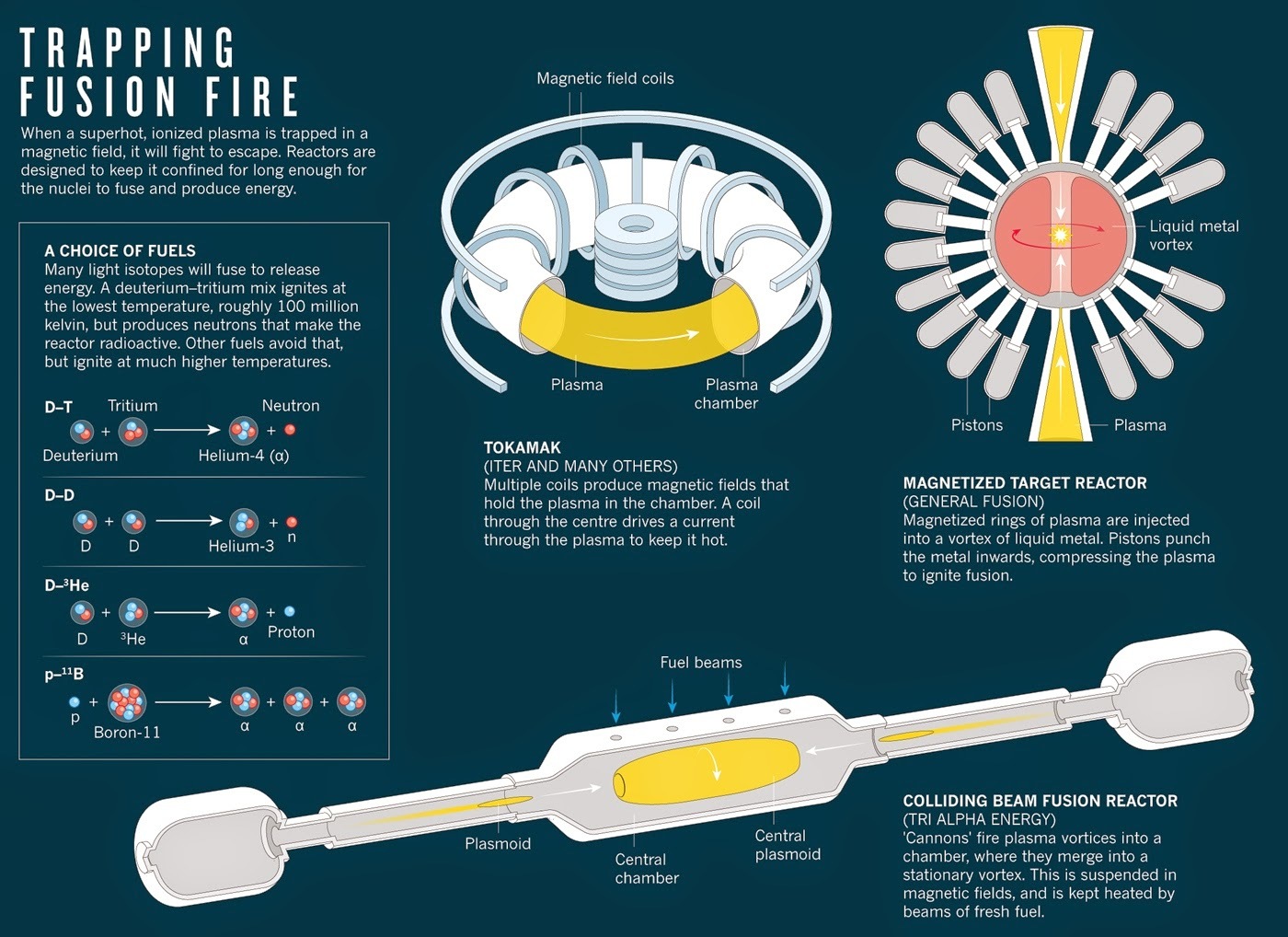
Tri Alpha Energy, a shadow-based startup, has recently achieved impressive results in advancing its fusion method (theorists have developed> 100 theoretical ways to achieve synthesis, the tokamak is simply the easiest and most popular). The company also raised more than $ 100 million in investor funds.
more
General fusion
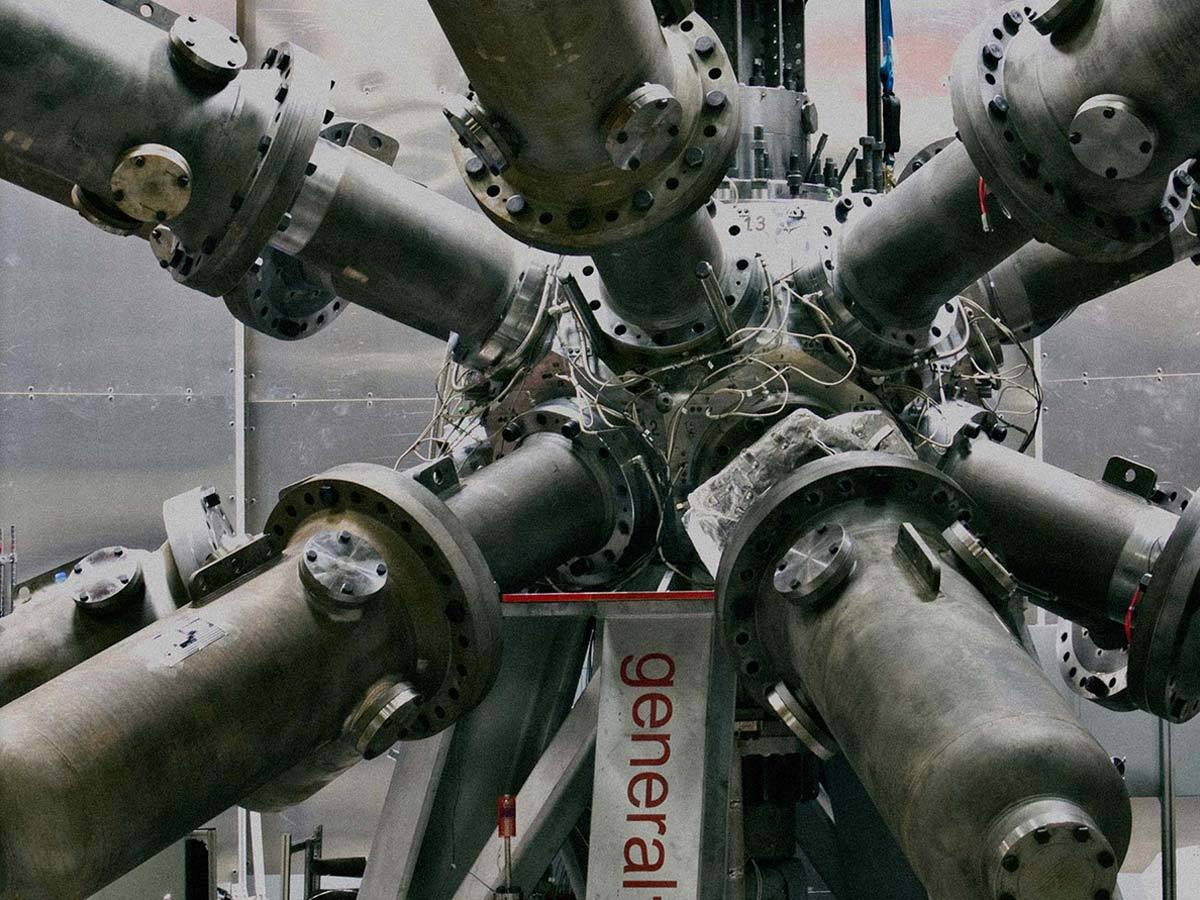
The design of the reactor from the Canadian startup General Fusion is no longer like the others, but the developers are confident in it and have attracted over 10 years more than $ 100 million to build the reactor by 2020.
more
First light

A start-up from the United Kingdom - First light has the most accessible site, formed in 2014, and announced plans to use the latest scientific data for less expensive fusion.
more
Tokamak energy
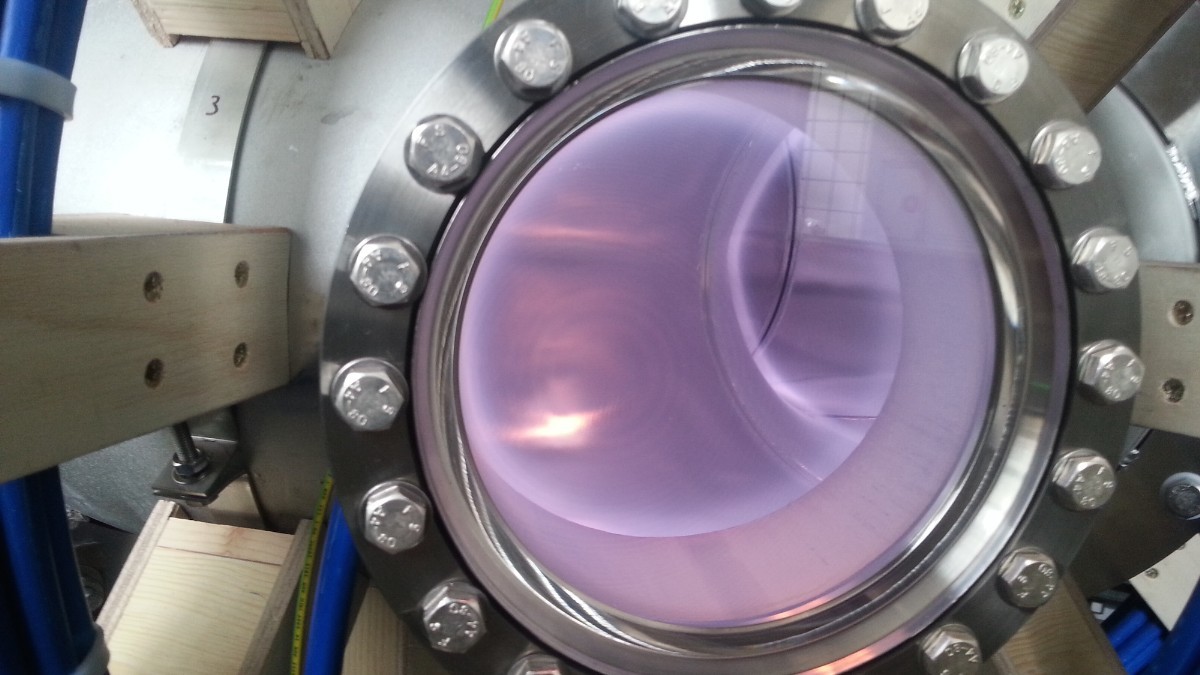
Another British startup, Tokamak Energy, is counting on new technologies in superconductors, which, they say, make it possible to achieve fusion in a small reactor at a lower cost.
more
MIT group
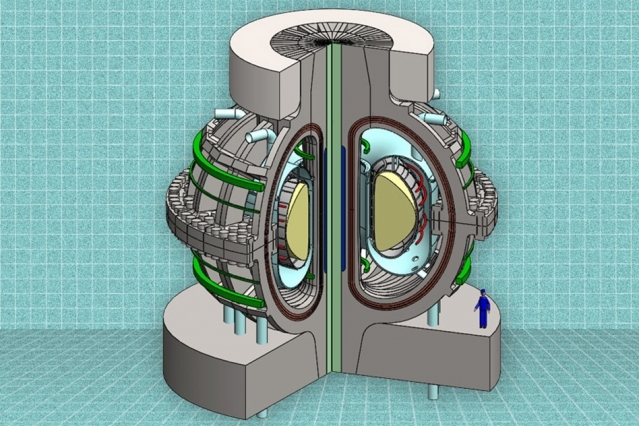
Scientists from MIT have written an article describing a compact fusion reactor. They rely on new technologies that appeared after the construction of giant tokamaks began and promise to carry out the project in 10 years. It is unknown whether they will be given the green light at the start of construction. Even if approved, an article in a magazine is even earlier than a startup.
more
Lawrenceville Plasma Physics

Thermonuclear fusion is perhaps the least suitable industry for crowdfunding. But it is with his help and also with the financing of NASA that Lawrenceville Plasma Physics is going to build a prototype of its reactor. Of all the projects being implemented, this one is most similar to fraud, but who knows, maybe they will bring something useful to this great work.
more
Demo
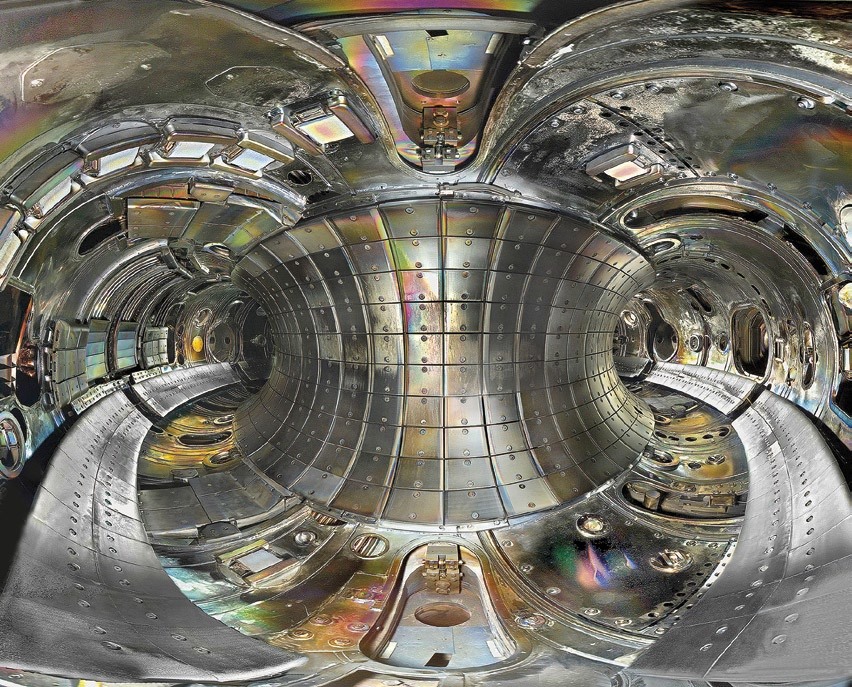
ITER will be only a prototype for building a full-fledged DEMO facility - the first commercial fusion reactor. Its launch is now scheduled for 2044, and this is still an optimistic forecast.
more
Hybrid reactor
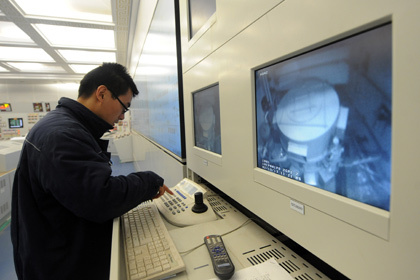
But there are plans for the next stage. A hybrid thermonuclear reactor will receive energy both from the decay of an atom (like a normal nuclear power plant) and from synthesis. In this configuration, the energy can be 10 times more, but security is lower. China expects to build a prototype by 2030, but experts say it's like trying to build hybrid cars before the invention of the internal combustion engine.
more
There is no shortage of those who want to bring a new source of energy into the world. The ITER project has the greatest chances, given its scale and financing, but other methods as well as private projects should not be discounted. Scientists have worked for decades to launch a fusion reaction without much success. But now there are more projects to achieve thermonuclear reaction than ever. Even if each of them fails, new attempts will be made. It is unlikely that we will calm down until we light a miniature version of the Sun, here on Earth.
Pierre-gilles de gennes
French Nobel Laureate

All electronic devices and machines need energy and humanity consumes it very much. But fossil fuels are running out, and alternative energy is not efficient enough yet.
There is a method of obtaining energy that perfectly fits all the requirements - Thermonuclear fusion. The reaction of thermonuclear fusion (the conversion of hydrogen to helium and the release of energy) constantly occurs in the sun and this process gives the planet energy in the form of solar rays. It is only necessary to imitate it on Earth, on a smaller scale. Enough to provide high pressure and very high temperature (10 times higher than on the sun) and the synthesis reaction will be launched. To create such conditions, you need to build a fusion reactor. It will use more common resources on earth, will be safer and more powerful than conventional nuclear power plants. For more than 40 years, attempts have been made to build it and experiments are underway. In recent years, one of the prototypes even managed to get more energy than was spent 1 . The most ambitious projects in this area are presented below:
')
State projects
ITER

The largest energy project and the largest research project in the world is the construction of the ITER fusion reactor in France. This experimental reactor for $ 40 billion will not yet serve as a full-fledged power plant, but it will prove that thermonuclear energy is possible. A coalition of countries, including Russia, should complete the construction of the reactor by 2026.
more
Wendelstein 7-X

Most public attention has recently been given to another design of a fusion reactor - the Wendelstein 7-X stellarator (the stellarator is more complex in its internal structure than ITER, which is the tokamak). Having spent just over $ 1 billion, German scientists built a reduced demonstration model of the reactor by 2015 for 9 years. If it shows good results, a larger version will be built.
more
MegaJoule Laser

MegaJoule Laser in France will be the most powerful laser in the world and will try to promote a laser-based fusion reactor construction method. The launch of the French installation is expected in 2018.
more
National ignition facility

NIF (National ignition facility) was built in the USA for 12 years and 4 billion dollars by 2012. They expected to test the technology and then immediately build a reactor, but it turned out that, as reported by Wikipedia - reach ignition. As a result, ambitious plans were canceled and scientists began to gradually improve the laser. The last task is to raise the energy transfer efficiency from 7% to 15%. Otherwise, funding from the congress of this method of achieving synthesis may cease.
more
Installation in Sarov

At the end of 2015, the construction of a building for the world's most powerful laser facility began in Sarov. It will be more powerful than the current American and future French and will allow to conduct the experiments necessary for the construction of a "laser" version of the reactor. Completion of construction in 2020.
MagLIF fusion

Located in the USA, the laser - MagLIF fusion is recognized as a dark horse among the methods of achieving thermonuclear fusion. Recently, this method has shown better results than expected, but the power still needs to be increased 1,000 times. Now the laser is undergoing an upgrade, and by 2018, scientists hope to get as much energy as they spent. If successful, an enlarged version will be built.
more
Institute of Nuclear Physics

In the Russian INP persistently conducted experiments on the method of "open traps" that was abandoned by the United States in the 90s. As a result, indicators were obtained that were considered impossible for this method. The INP scientists believe that their installation is now at the level of the German Wendelstein 7-X (Q = 0.1), but cheaper. Now for 3 billion rubles they are building a new installation
more
Ignitor

The head of the Kurchatov Institute constantly recalls about plans to build a small fusion reactor in Russia - Ignitor. According to the plan, it should be as effective as ITER, although less. Its construction should have begun 3 years ago, but this situation is typical for large scientific projects.
more
EAST

At the beginning of 2016, the Chinese tokamak EAST managed to get a temperature of 50 million degrees and hold it for 102 seconds. Before the construction of huge reactors and lasers, all the news about fusion were like that. One would have thought that this was just a competition among scientists — who would keep the temperature higher and longer. The higher the temperature of the plasma and the longer it can be kept - the closer we are to the start of the fusion reaction. There are dozens of such installations in the world, a few more ( 1 ) ( 2 ) are being built so that the EAST record will soon be broken. In essence, these small reactors are just equipment testing before being sent to ITER. more
Private projects
Lockheed martin compact fusion

Lockheed Martin announced in 2015 about a breakthrough in thermonuclear energy, which will allow them to build a small and mobile thermonuclear reactor in 10 years. Considering that even very large and not mobile commercial reactors were expected no earlier than 2040, the corporation’s statement was met with skepticism. But the company has great resources so who knows. The prototype is expected in 2020.
more
Helion Energy

Helion Energy, a popular startup in Silicon Valley, has a unique plan for achieving thermonuclear fusion. The company has attracted more than 10 million dollars and expects to create a prototype by 2019.
more
Tri Alpha Energy

Tri Alpha Energy, a shadow-based startup, has recently achieved impressive results in advancing its fusion method (theorists have developed> 100 theoretical ways to achieve synthesis, the tokamak is simply the easiest and most popular). The company also raised more than $ 100 million in investor funds.
more
General fusion

The design of the reactor from the Canadian startup General Fusion is no longer like the others, but the developers are confident in it and have attracted over 10 years more than $ 100 million to build the reactor by 2020.
more
First light

A start-up from the United Kingdom - First light has the most accessible site, formed in 2014, and announced plans to use the latest scientific data for less expensive fusion.
more
Tokamak energy

Another British startup, Tokamak Energy, is counting on new technologies in superconductors, which, they say, make it possible to achieve fusion in a small reactor at a lower cost.
more
MIT group

Scientists from MIT have written an article describing a compact fusion reactor. They rely on new technologies that appeared after the construction of giant tokamaks began and promise to carry out the project in 10 years. It is unknown whether they will be given the green light at the start of construction. Even if approved, an article in a magazine is even earlier than a startup.
more
Lawrenceville Plasma Physics

Thermonuclear fusion is perhaps the least suitable industry for crowdfunding. But it is with his help and also with the financing of NASA that Lawrenceville Plasma Physics is going to build a prototype of its reactor. Of all the projects being implemented, this one is most similar to fraud, but who knows, maybe they will bring something useful to this great work.
more
Future plans
Demo

ITER will be only a prototype for building a full-fledged DEMO facility - the first commercial fusion reactor. Its launch is now scheduled for 2044, and this is still an optimistic forecast.
more
Hybrid reactor

But there are plans for the next stage. A hybrid thermonuclear reactor will receive energy both from the decay of an atom (like a normal nuclear power plant) and from synthesis. In this configuration, the energy can be 10 times more, but security is lower. China expects to build a prototype by 2030, but experts say it's like trying to build hybrid cars before the invention of the internal combustion engine.
more
Total
There is no shortage of those who want to bring a new source of energy into the world. The ITER project has the greatest chances, given its scale and financing, but other methods as well as private projects should not be discounted. Scientists have worked for decades to launch a fusion reaction without much success. But now there are more projects to achieve thermonuclear reaction than ever. Even if each of them fails, new attempts will be made. It is unlikely that we will calm down until we light a miniature version of the Sun, here on Earth.
Source: https://habr.com/ru/post/396961/
All Articles